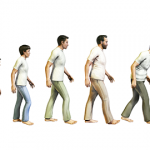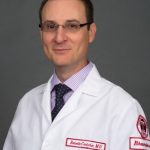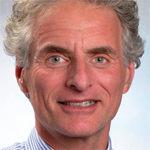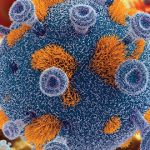

Some Quotes about Aging (and Rock ‘n’ Roll):
“You start out playing rock ‘n’ roll so you can have sex and do drugs, but you end up doing drugs so you can still play rock ’n’ roll and have sex.”
—Mick Jagger
“The body, to an increasing degree, is now felt to rust out rather than to wear out.”
—Jim Fries, MD
“It’s better to burn out than it is to rust.”
—Neil Young
At the recent 12-12-12 benefit concert for Sandy, I was pretty amazed watching Mick Jagger leap and strut across the stage at Madison Square Garden, bringing the audience to their feet. Shirtless and wearing his signature skintight jeans, Mick’s energy, and that of his bandmates, seemed boundless. Not bad for a bunch of guys (Jagger, 69; Keith Richards, 69; Charlie Watts, 71; and Ron Wood, 65) who, as Americans, would be eligible to receive Medicare benefits and monthly Social Security checks. Though Jagger’s crinkled visage displays a weathered magnificence worthy of his age, his legs don’t seem to have suffered from the ravages of aging. How does he do it? Apparently, Jagger has been a fitness buff his entire life. His father, Joe, who died at age 93, was a physical education teacher who instilled a fierce work ethic in his son. According to an article published last year in The Daily Mail, Sir Mick runs eight miles a day, swims, kickboxes, and cycles. He also takes ballet lessons and studies yoga and pilates. This regimen keeps him in adequate shape to cover the 12 miles of strutting and sashaying of a typical Stones concert.
Watching the Stones, The Who, and Eric Clapton perform on that chilly December night in New York brought to mind an anecdote about aging from an earlier time in my career. I needed to create some teaching slides on the topic of polymyalgia rheumatica (PMR). I assembled the list of key diagnostic criteria including the sine qua non of PMR: patients must be at least 50 years of age. To add a personal touch, I inserted the header: “PMR: A Disease of the Elderly.” Well, I thought, isn’t 50 a pretty old age? After all, it’s the birthday signifying one’s eligibility to join that most famous of geriatric organizations, the AARP. Needless to say, that slide got trashed by the time I turned forty!
Does Age Affect Our Medical Decision Making?
As rheumatologists, we constantly factor the age of the patient into our treatment algorithms. Is a patient too old or too young to treat? How aggressive should therapy be? Or, should we leave well enough alone? Years ago, I was asked to evaluate a lovely 92-year-old nursing home resident for the management of gout. Rita was a delightful woman whose sound and vibrant mind resided in a body that could no longer sustain her living independently. This episode of podagra was her second, the first occurring five years earlier. After carefully reviewing the therapeutic options, I decided to treat her attack symptomatically and not start allopurinol therapy. I came to regret that decision.
Twelve years later, I saw Rita again. Lovely and sharp as ever, she had just turned 104. Apparently, one of the nursing home staff doctors was concerned that a new finger swelling represented an abscess and he attempted to lance it. Unfortunately, the swelling was a tophus, which, following this ill-timed procedure quickly became infected. Ultimately, the digit had to be amputated. Despite this measure, Rita developed septicemia and passed away. In hindsight, I should have started allopurinol when I first met Rita, but I did not expect her to live long enough to benefit from the drug.
I took this lesson to heart when, several years later, I met another woman, who, coincidentally, was named Rita. The matriarch of a large and loving family, Rita had resisted seeing a doctor for her arthritis symptoms. Her mobility was in decline and, as she told me, “I did not want to spend my last days being pushed around in a wheelchair.” Rita had a fairly impressive joint exam; boggy, symmetric polyarthritis was apparent. Clearly her immune system had not receded into senescence. A combination of methotrexate and a biologic disease-modifying drug worked wonders treating her seropositive rheumatoid arthritis (RA). When I last saw her a month ago, she was turning 99, still taking her medications, and looking forward to swinging a golf club next spring.
Theories of Aging
Four major theories on the mechanisms of aging have been suggested.
The wear-and-tear theory proposes that all living things that exist under the control of time may be damaged either by extrinsic environmental damage such as radiation, free radicals, infections, and attacks from the predators or by intrinsic environmental damage such as free radicals and metabolites. This damage may induce somatic mutations leading to the acceleration of aging or even malignancy. A corollary to this concept is the wear and repair theory, which proposes that there are, in fact, mechanisms of inheritable maintenance and repair. For example, this view is supported by the observation that many patients improve their cardiovascular functional status following myocardial events. Similarly, many of our older patients with partial tendon tears show evidence for repair over time. Yet, inevitability, the wear side of the equation wins.
The mutation accumulation theory is based on a hypothesis put forth in 1952 by the Nobel laureate Sir Peter Medawar. It proposes that aging is due to random mutations that cause adverse aging characteristics. Thus, aging is the phenotype of an array of genetic disorders, each of which leads to adverse symptoms only at advanced ages. Unlike the earlier wear-related theories, the mutation accumulation theory does not establish any specific, inescapable cause of aging. Since aging is the result of adverse mutations, deletion of these mutations could promote longevity, perhaps indefinitely.
The fourth theory of aging is based on the concept of antagonistic pleiotropy, first proposed in 1957 by the late professor George C. Williams of the State University of New York at Stony Brook. This concept explains why genes can be selected for their beneficial effects in early life despite having negative effects in later life. This idea does not contradict Darwinian principles, since genes tend to have larger impacts on fitness in an organism’s prime than in its later years. For example, higher serum testosterone levels may promote increased fitness in younger males, while causing decreased fitness in later life due to a higher risk for prostate cancer.
Inflammaging
Immune aging is associated with the loss of some critical immune functions, such as host protection from infection and malignancy. Paradoxically, immunosenescence also renders the host susceptible to inflammation, which may translate into tissue damaging disease as the aging immune system loses its ability to maximize inflammatory protection while minimizing inflammatory injury. The net result is a low-grade chronic proinflammatory state that Italian investigators, led by Claudio Franceschi MD, professor of immunology at the University of Bologna, Italy, have termed inflammaging.2 Inflammaging proposes that aging can be driven by proinflammatory cytokines such as interleukin (IL) 1 and tumor necrosis factor (TNF)–α and other substances produced by the innate immune system. In later stages of life, these potentially harmful signals may act antagonistically to the beneficial role they provided in an earlier stage of life, when they served as developmental engines for body system formation. Although macrophages are generally thought to be the primary producers of these cytokines, aging is associated with a decrease in macrophage production of proinflammatory cytokines. In contrast, senescence of fibroblast and epithelial cells is associated with an increase in their secretion of multiple growth factors, adhesion molecules, and cytokines, including IL-6. Based on observations in mice, aging adipose tissue may also be a source of heightened TNF and IL-6 expression.
Aging and Arteritis
Aging is enough of a challenge without having to deal with the burden of a rheumatologic disease such as giant cell arteritis (GCA) or RA. Our colleagues, Jorg Goronzy MD, and Cornelia Weyand MD, both professors of medicine at Stanford University in Palo Alto, Calif., have proposed some interesting theories to explain the link between these diseases and the aging immune system.3 Age, the strongest of all risk factors for GCA, impacts the two major elements that interact to cause vascular inflammation, namely the innate and adaptive arms of the immune system and the unique microenvironment of the vessel wall. The authors propose that GCA may be a disease of uncontrolled dendritic-cell (DC) and T-cell activation in a tissue site that is ordinarily inaccessible to immune responses. As the host ages, the tissue site itself undergoes numerous structural changes, summarized as vascular aging. This process brings with it changes in elastic fibers and matrix proteins and remodeling of the medial and intimal layer, affecting cellular traffic, turnover, and survival. Perhaps the infectious load of the aging host triggers activation of vascular DCs that can no longer protect the structurally altered vascular wall, giving rise to tissue-injurious inflammation. I guess the warranty for functioning DCs expires after 50 years of service!
Aging and RA: Shortened Telomeres and a Shrinking Thymus
In patients with RA, it has been noted that T-cell generation is inappropriately low, matching that of healthy individuals who are 20 to 30 years older. Consequently, homeostatic T-cell proliferation is greater, resulting in the premature senescence of T cells. Some of this decline in T-cell production in patients with RA has also been ascribed to premature involution of the thymus, which causes this diminutive organ to shrink beginning in childhood.
Remember the telomere? Perhaps you slept through your genetics classes? During cell division, enzymes that duplicate DNA cannot continue their duplication all the way to the end of chromosomes. If they did, cells would lose the ends of their chromosomes and the encoded genetic data. Serving in a role equivalent to football linemen are the telomeres. These are regions of repetitive nucleotide sequences that were first discovered in 1978 by Elizabeth Blackburn, PhD, who was working as a postdoctoral student at Yale. Dr. Blackburn, currently professor of medicine at the University of California at San Francisco, along with Jack Szostack, PhD, professor of medicine at Harvard Medical School in Boston, and Carol Greider, PhD, professor of medicine at Johns Hopkins University in Baltimore, were awarded the 2009 Nobel Prize in Medicine for their work elucidating the role of telomeres.
Immune cell longevity is tightly connected to the functional integrity of telomeres, which are regulated by cell multiplication, exposure to oxidative stress, and DNA repair mechanisms. In patients with RA, telomerase deficiency is associated with premature immune aging. Lymphocytes are among the few cell types that can actively elongate telomeres through the action of telomerase, but premature telomere shortening in lymphocytes from patients with RA is seen because up-regulation of the telomerase enzyme is faulty in patients with RA.3 The deficiency in telomerase activity was found to be independent of the duration or severity of RA, suggesting that it may contribute to the development of RA.
Perhaps this may explain an interesting observation by our colleagues at the Mayo Clinic in Rochester, Minn. Using mathematical modeling techniques, they found evidence for accelerated aging in patients with RA.4 The best-fitting models consistently showed effective aging of two extra years at the time of diagnosis of RA and additional aging of 1.4 years for every 10 years of disease thereafter. The excess aging noted at the time of the diagnosis of RA suggests that an inflammatory or immunologic event or injury precedes the clinical presentation of RA, whereas the acceleration of aging finding supports the concept of senescence of the immune or other subsystems of the body following the development of RA.
Successful Aging: Clues from Centenarians
Is there a way to age gracefully? A Google search of this phrase generates over 2.5 million results. There is no shortage of interest in this topic, but there are few proven remedies. Vitamin supplements, low-calorie diets, and sirtuins hold some promise and, as our dermatologist colleagues remind us, a well-placed injection of botulinum toxin can at least temporarily reverse the effects of time. Perhaps we can gain some insight from the study of those individuals who have succeeded in aging gracefully. The New England Centenarian Study (NECS) was founded in 1994 as a longitudinal study of centenarians to identify clues to healthy human aging.5 The study, along with other databases, has demonstrated that the majority of centenarians markedly delay high mortality risk–associated diseases toward the ends of their lives, yet many centenarians have a history of enduring more chronic age-related diseases for many years, women more so than men. The majority of centenarians seem to deal with these chronic diseases more effectively, not experiencing disability until well into their 90s.
People who live to the most extreme ages are generally living proof of the compression-of-morbidity hypothesis. That is, they compress morbidity and disability to the very ends of their lives. The compression-of-morbidity hypothesis posits that preventive lifestyle behaviors, including regular exercise, will postpone disability by at least as much as it does mortality, thus compressing morbidity between a later onset and the age at death. To test this hypothesis, Jim Fries, MD, master member of the ACR, and colleagues at Stanford University devised a long-term study of runners aged 50 and older.6 Since 1984, these investigators have followed more than 500 runners, comparing them to an age-matched control group. After 19 years of follow-up, 15% of runners had died compared with 34% of controls. Following adjustments for covariates, runners demonstrated a survival benefit with a hazard ratio of 0.61. As participants approached their ninth decade of life, disability and survival curves continued to diverge between the two groups.
But if you choose not to run, consider walking fast. A detailed meta-analysis of nine previous longitudinal cohort studies of adults aged 65 and older found that gait speed is the index that correlates strongest with survival. A speed exceeding 0.8 m/s predicted longevity exceeding the median for age and sex.7 So rest easy, Sir Mick. I clocked you at an impressive 2.6 m/s onstage. Keep on rocking!
Dr. Helfgott is physician editor of The Rheumatologist and associate professor of medicine in the division of rheumatology, immunology, and allergy at Harvard Medical School in Boston.
References
- Goto M. Inflammaging (inflammation + aging): A driving force for human aging based on an evolutionarily antagonistic pleiotropy theory? BioSci Trends. 2008;2:218-230.
- Franceschi C, Capri M, Monti D, et al. Inflammaging and anti-inflammaging: A systemic perspective on aging and longevity emerged from studies in humans. Mech Ageing Dev. 2007;128:92-105.
- Goronzy JJ, Fujii H, Weyand CM. Telomeres, immune aging and autoimmunity. Exp Gerontol. 2006;41:246–51.
- Crowson CS, Liang KP, Therneau TM, Kremers HM, Gabriel SE. Could accelerated aging explain the excess mortality in patients with seropositive rheumatoid arthritis? Arthritis Rheum. 2010;62:378-382.
- Sebastiani P, Perls TT. The genetics of extreme longevity: Lessons from the New England centenarian study front. Gene. 2012;3:277.
- Chakravarty EF, Hubert HB, Lingala VB, Fries JF. Reduced disability and mortality among aging runners. A 21-year longitudinal study. Arch Intern Med. 2008;168:1638-1646.
- Studenski S, Perera S, Patel K, et al. Gait speed and survival in older adults. JAMA. 2011;305:50-58.



